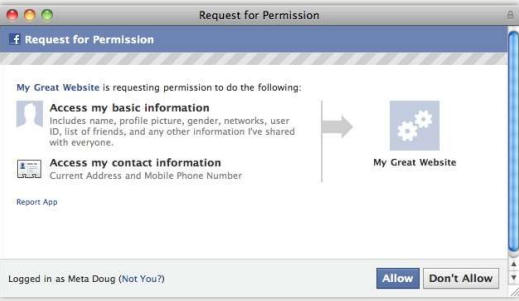Table of Contents
“METHANOL ECONOMY”: NITI AAYOG WORKING ON ROAD MAP FOR INDIA ON WORLD ENVIRONMENT DAY, 2018
NOTES
Nitin Gadkari – the current Minister for Road Transport & Highways, Shipping and Water Resources, River Development & Ganga Rejuvenation in the Government of India.
India needs around 2900 cr litres of petrol and 9000 cr litres of diesel per year currently, the 6th highest consumer in the world and will double consumption and become 3rd largest consumer
by 2030. Our import bill on account of crude stands at almost 6 lac crores.
HYDROCARBON FUELS
Hydrocarbon Fuels have also adversely affected the environment with Green House Gas Emissions (GHG). (Extracted hydrocarbons in a liquid form are referred to as petroleum (literally “rock oil”) or mineral oil).
India is the third highest energy related carbon dioxide emitter country in the world. Almost 30% pollution in cities like Delhi is from automobiles and the growing number of
automobiles on the road will further worsen the pollution.
MISSION 2022
Hon’ble Prime Minister has set a goal for our Country to reduce the import bill by 10% by the year 2022. Crude oil imports drain our foreign exchange, putting enormous pressure on our currency & thereby weakening our bargaining power with the rest of the world.
We need to have our own “Indian Fuel of global relevance”.
WHY METHANOL?
Methanol is a clean burning drop in fuel which can replace both petrol & diesel in transportation & LPG, Wood, Kerosene in cooking fuel. It can also replace diesel in Railways, Marine Sector, Gensets, Power Generation and Methanol based reformers could be the ideal compliment to Hybrid and Electric Mobility.
Methanol Economy is the “Bridge” to the dream of a complete “Hydrogen based fuel systems”.
METHANOL ECONOMY
The methanol economy is a suggested future economy in which methanol and dimethyl ether replace fossil fuels as a means of energy storage, ground transportation fuel, and raw material for synthetic hydrocarbons and their products.
It offers an alternative to the proposed hydrogen economy or ethanol economy.
METHANOL ECONOMY
In the 1990s, Nobel prize winner George A. Olah advocated a methanol economy; (Nobel Prize in Chemistry in 1994) in 2006, he and two co-authors, G. K. Surya Prakash and Alain Goeppert, published a summary of the state of fossil fuel and alternative energy sources, including
their availability and limitations, before suggesting a methanol economy.
METHANOL ECONOMY VERSUS HYDROGEN ECONOMY
• Hydrogen has been regarded as a clean fuel due to its zero nontoxic emissions but there are serious issues related to its production, storage, and safety. On the other hand, methanol
happens to be a safe carrier-fuel for hydrogen as a litre of liquid methanol has more hydrogen as compared to a litre of pure cryogenically stored hydrogen.
METHANOL ZINDABAD
•Methanol burns efficiently in all internal combustion engines, produces no particulate matter , no soot , almost nil SOX and NOX emissions (NEAR ZERO POLLUTION).
•The gaseous version of Methanol – DME can blended with LPG and can be excellent substitute for diesel in Large buses and trucks.
PRODUCTION
• Methanol can be produced from Natural Gas , Indian High Ash Coal , Bio-mass, MSW , stranded and flared gases and India can achieve (through right technology adaptation} to produce Methanol @ Rs.19 a litre from Indian coal and all other feed stock.
• The best part world is already moving towards renewable methanol from C02 and the perpetual recycling of C02 into Methanol, say CO2 emitted from Steel plants, Geothermal
energy or any other source of CO2, effectively “Air to Methanol”.
NOTES
Currently Methanol accounts for almost 9% of transport fuel in China. They have converted millions of vehicles running on Methanol. China alone produces 65% of world
Methanol and it uses its coal to produce Methanol.
NOTES
Israel, Italy have adopted the Methanol 15% blending program with Petrol and fast moving
towards M85 & M100, Japan, Korea have extensive Methanol & DME usage and Australia has adopted GEM fuels (Gasoline, Ethanol & Methanol) and blends almost 56% Methanol.
WHAT INDIA CAN DO?
India has an installed Methanol Production capacity of 2 MT per annum. As per the plan prepared by NITI Aayog, using Indian High Ash coal, Stranded gas, and Biomass can produce 20MT of methanol annually by 2025. India, with 125 Billion Tonnes of proven Coal reserves
and 500 million tones of Biomass generated every year & the huge quantities of Stranded & Flared gases has a huge potential for ensuring energy security based on alternate feed stock and fuels.
NOTES
NITI Aaayog has drawn out a road map to substitute 10% of Crude imports by 2030, by
Methanol alone. This requires approximately 30MT of Methanol. Methanol & DME are substantially cheaper than Petrol and Diesel and India can look to reduce its fuel bill 30% by 2030.
NOTES
India by adopting Methanol can have its own indigenous fuel at the cost of approximately Rs. 19
per litre at least 30% cheaper than any available fuel. Methanol fuel can result in great environmental benefits and can be the answer to the burning urban pollution issue.
NOTES
At least 20% diesel consumption can be reduced in next 5-7 years and will result in a savings of Rs. 26,000 crore annually. Rs. 6000 crore can be annually saved from reduced bill in LPG in the next 3 years itself. The Methanol blending program with petrol will further reduce our fuel bill by at least Rs. 5000 crore annually in next 3 years.





















 WhatsApp
WhatsApp